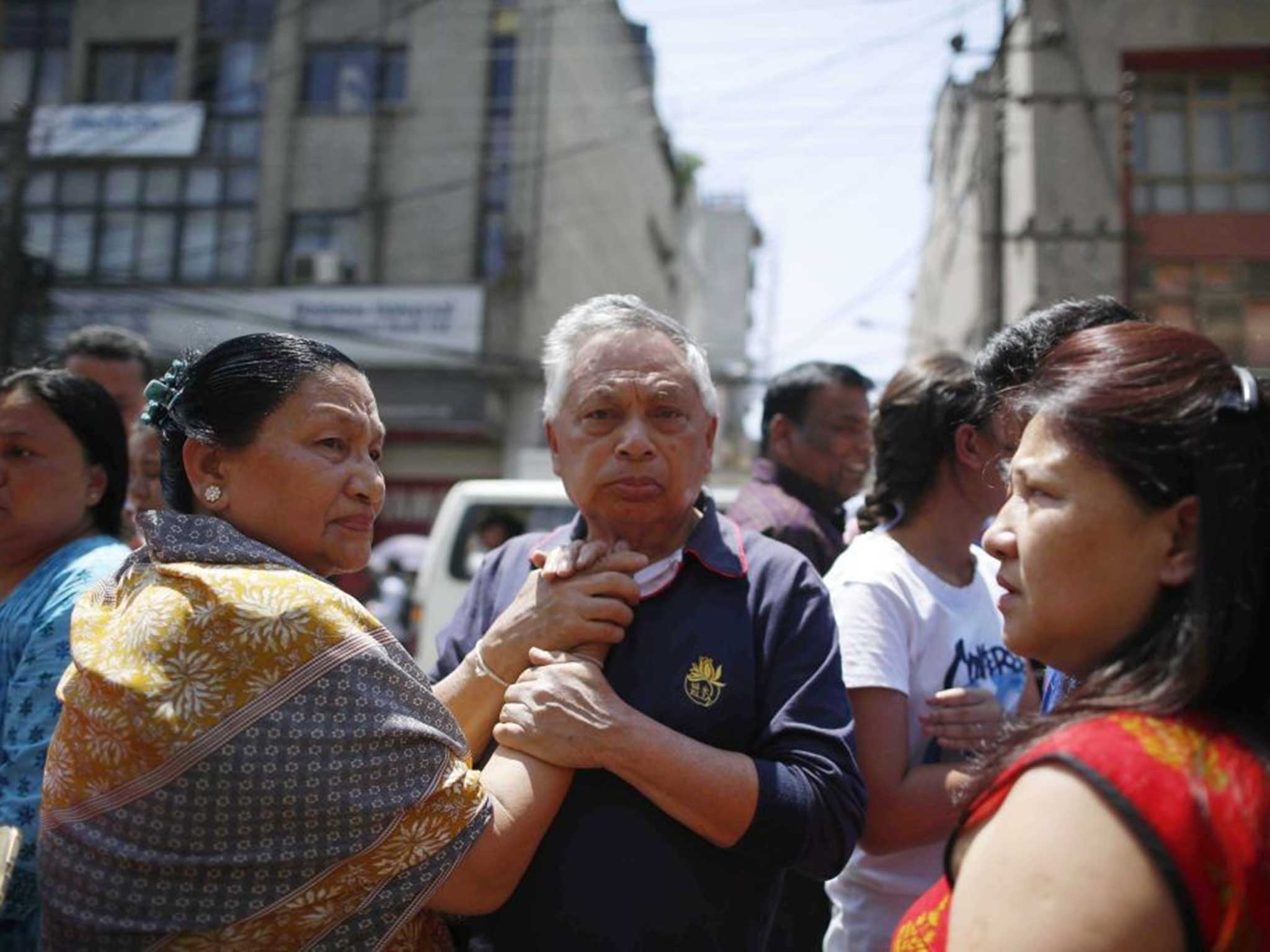Nepal earthquake: How strong was the second quake compared to the first that hit the country?
Four people have already been reported dead as the country struggles to recover from a stronger quake last month

Your support helps us to tell the story
From reproductive rights to climate change to Big Tech, The Independent is on the ground when the story is developing. Whether it's investigating the financials of Elon Musk's pro-Trump PAC or producing our latest documentary, 'The A Word', which shines a light on the American women fighting for reproductive rights, we know how important it is to parse out the facts from the messaging.
At such a critical moment in US history, we need reporters on the ground. Your donation allows us to keep sending journalists to speak to both sides of the story.
The Independent is trusted by Americans across the entire political spectrum. And unlike many other quality news outlets, we choose not to lock Americans out of our reporting and analysis with paywalls. We believe quality journalism should be available to everyone, paid for by those who can afford it.
Your support makes all the difference.Nepal has been struck by a 7.3 Richter scale earthquake, just weeks after a 7.8 quake devastated the mountainous nation - but how strong is the latest quake?
Earthquakes are measured by the Richter scale, which rates the magnitude – or amount of energy released – of each quake from 2.0 to 9.0 and greater.
The Richter scale is logarithmic, so the wave amplitude of each quake increases ten-fold with every whole-number on the scale.
In practise, this means that the disparity between a ‘moderate’ quake (5.0 to 5.9) and a ‘major’ quake (7.0 to 7.9) is huge. For example, the wave amplitude goes up 100 times between a Richter scale 7 quake and 9, with the amount of energy increasing 31.7 times between each whole number value.
The latest Nepal quake measured 7.3 and although that appears as bad as the previous quake, given the scale is logarithmic in practise that means the damage may be significantly less. In perspective, a similar scale quake in Azores Islands (in 1980) killed 61 people and injured 400 more.
But - and it is a huge but - the country has still barely recovered from the previous disaster and should the death toll (already more than four) and damage be extensive the infrastructure may not be able to cope.
Extending this point, although the magnitude is smaller, other factors must be considered when assessing the strength of a quake. The composition of the ground, construction of nearby buildings, and in-place infrastructure all affect the severity of these natural disasters.
Join our commenting forum
Join thought-provoking conversations, follow other Independent readers and see their replies
Comments